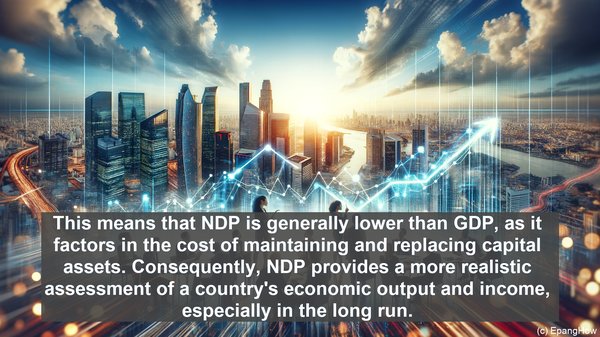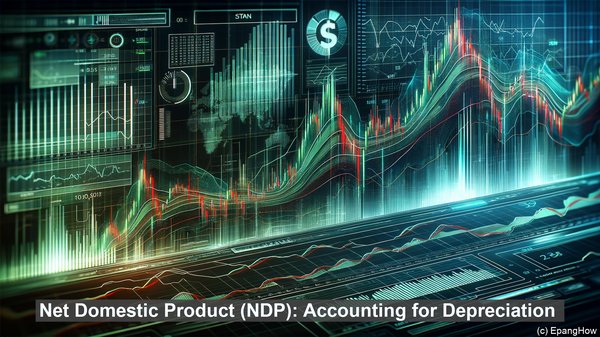Introduction: The Pulse of an Economy
Hello everyone! Have you ever wondered how economists measure the health of a nation’s economy? Two key indicators that play a crucial role in this assessment are Gross Domestic Product (GDP) and Net Domestic Product (NDP). While both provide insights into a country’s economic activity, they differ in their scope and the factors they consider. Let’s dive deeper into this fascinating subject!

Gross Domestic Product (GDP): The Broad Picture
GDP is a widely used measure of a nation’s economic performance. It represents the total value of all goods and services produced within a country’s borders during a specific period, typically a year. By encompassing consumption, investment, government spending, and net exports, GDP provides a comprehensive overview of economic activity. It serves as a barometer of a country’s overall production and income generation.
Net Domestic Product (NDP): Accounting for Depreciation
While GDP provides a holistic view, it doesn’t account for the wear and tear or depreciation of assets used in production. This is where NDP comes into play. NDP adjusts for depreciation, which refers to the decline in the value of capital goods over time. By subtracting depreciation from GDP, NDP offers a more accurate measure of a nation’s net production and income. It highlights the sustainability of economic growth by considering the need for capital replacement.
GDP vs. NDP: A Comparative Analysis
The key distinction between GDP and NDP lies in their treatment of depreciation. While GDP represents the total value of production, NDP reflects the net value after accounting for capital depreciation. This means that NDP is generally lower than GDP, as it factors in the cost of maintaining and replacing capital assets. Consequently, NDP provides a more realistic assessment of a country’s economic output and income, especially in the long run.

The Significance of GDP and NDP
Both GDP and NDP are vital indicators for policymakers, businesses, and economists. GDP offers insights into the overall economic activity and size of a nation’s economy. It helps in comparing the economic performance of different countries and tracking changes over time. On the other hand, NDP provides a measure of sustainable economic growth. By considering depreciation, it highlights the need for investment in capital goods to maintain and enhance production capabilities.
